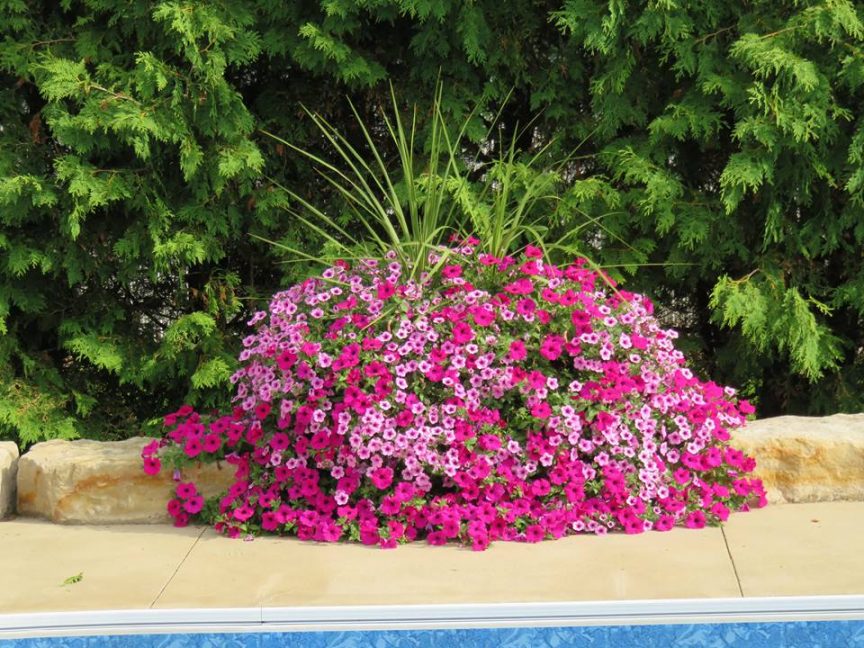Always a gardeners favorite annual, petunias now come in newer varieties offering even more spectacular shows of color than ever before. The Wave Petunia and Supertunia are among those that create show stopping ground cover or hanging baskets. So how do you know which one to choose?
Uses
The Wave petunia is known for their ability to blanket the garden in colour and are often used as a ground cover or border. They are also a favorite container flower and can be used in hanging baskets.
The Supertunia is better suited for hanging baskets or containers as their branches can reach a length of 3 feet or more and will easily drape over the side of containers, depending on the variety type.
Growing Habits
The Wave petunia is an aggressive grower than can quickly overtake a space. It can choke out other flowers grown nearby or in the same container or basket. It also grows a huge root ball system which may become a problem in containers and hangers.
The Supertunia is less aggressive making them very suitable for adding them into containers or hanging baskets along with other plants as they won’t grow the massive root system like the wave.
Where They Come From
The Wave petunia is propagated with seeds, which means the plant will need to put out seeds, taking away some of it’s energy needed for producing growth and flowers.
The Supertunia is propagated with cuttings which help preserve its quality and vigor. Since they don’t come from seed that means they do not produce seeds, so their energy is to grow and produce flowers.
Blooming
The Wave comes in different sizes: tidal wave has the largest flowers on a lengthy stem. Shock wave has a small flower and can be suitable for containers. The Easy wave has big bright blooms with a wide variety of colours. Some varieties may slow down on producing flowers mid-summer and need to be cut back to promote new growth.
A Supertunia has been bred and tested for excellence in performance and flower power. They generally reach a height of 6-10″ and can spread or trail up to 24-36″. Their stems also contain more leaves and flowers and have better heat and humidity tolerance in the hot summer months than the wave petunia.

Caring for your Petunia
Both the Wave and Supertunia need adequate water, sun and fertilizer to help them stay at the top of their game. Clipping a few stems every week or two will help promote new, fuller growth and more flowers to enjoy. Supertunias are extremely vigorous growers and bloomers, but they require frequent feeding to keep them looking bright and lush. They each need anywhere from 4-6 hours of sun a day, but will perform better if planted in full sun. The more shade they are in, the less blooms they will produce.
Both will attract hummingbirds and bloom through the summer well into the fall. Unlike standard box plant petunias that require regular deadheading to keep them blooming, wave petunias and supertunias need no deadheading. As the flowers wilt and dry, they will naturally fall away from the plant. Pruning either of these types will keep your plant looking full and healthy, avoiding that ‘leggy’ look. Poor light, insufficient soil nutrition and not enough water can also result in ‘leggy’ and unhealthy plants. Both the wave and the Supertunia will require frequent watering to keep up with their rapid growth, especially in hot weather.
Bottom Line
If your idea of beauty is a colourful mass of petunias that blanket the garden, then the Wave petunia is a better choice. If you’re wanting full colourful containers or hanging baskets that won’t get root bound, then the Supertunia is the one for you.
A video below to help explain the difference in Supertunias for growth, flower size and trailing length.

